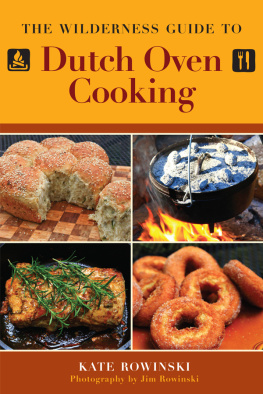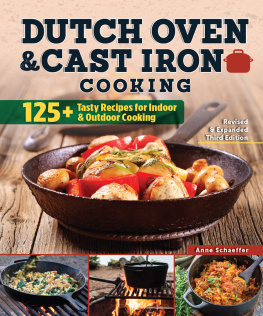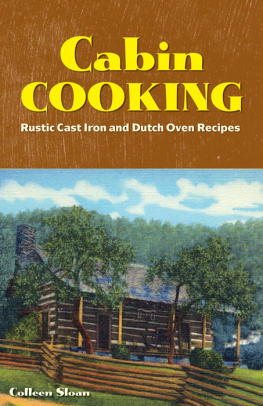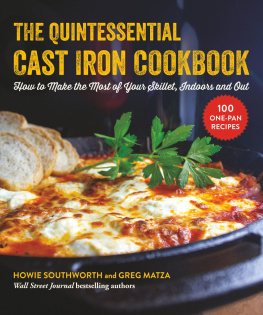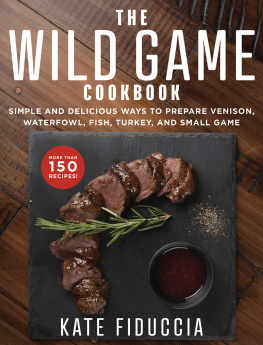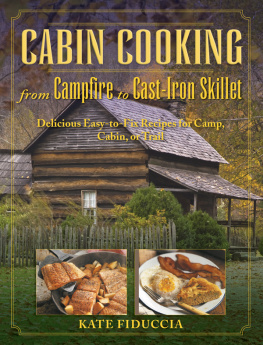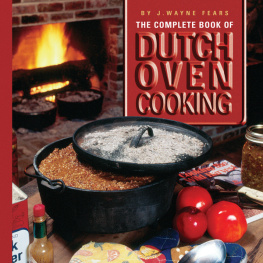Copyright 2002, 2012 by Kate Fiduccia
All rights reserved. No part of this book may be reproduced in any manner without the express written consent of the publisher, except in the case of brief excerpts in critical reviews or articles. All inquiries should be addressed to Skyhorse Publishing, 307 West 36th Street, 11th Floor, New York, NY 10018.
Skyhorse Publishing books may be purchased in bulk at special discounts for sales promotion, corporate gifts, fund-raising, or educational purposes. Special editions can also be created to specifications. For details, contact the Special Sales Department, Skyhorse Publishing, 307 West 36th Street, 11th Floor, New York, NY 10018 or info@skyhorsepublishing.com.
Skyhorse and Skyhorse Publishing are registered trademarks of Skyhorse Publishing, Inc., a Delaware corporation.
Visit our website at www.skyhorsepublishing.com.
10 9 8 7 6 5 4 3 2 1
Library of Congress Cataloging-in-Publication Data is available on file.
Cover design by Jane Sheppard
Print ISBN: 978-1-63450-260-3
Ebook ISBN: 978-1-5107-0202-8
Printed in China
DEDICATION
This book is dedicated to my husband, Peter, and our son, Cody, who always give their faithful support for all my endeavors, endure my experimental dishes and recipes whipped up on a whim, and reliably leave me room in the goose blind.
| TABLE OF CONTENTS |  |
Introduction
M y love of outdoor cooking has been developed through nearly two decades of hunting and fishing across North America. As co-host of the Woods N Waters TV series, Ive been fortunate to visit some of the finest spots around. From the back-country streams in New Yorks Adirondack Mountains to the aspen-filled valleys of northern Utah, my travels have allowed me to cook in some of the most beautiful settings on earth. Along the way, Ive also been privileged to savor bounty prepared by fellow anglers and hunters.

In the following pages, youll find over 140 of my quick, simple, delicious recipes for a variety of fish and wild game. For the most part, the main ingredients in these recipes will be shot or landed at camp. But there are also some non-game recipes for those times youll be carrying things like ground beef to camp. In addition, youll see easy-to-fix recipes for breads, beverages and vegetable dishes to supplement the wild fare. Ive even included some gems generously shared by outfitters and guides Ive encountered over the years, as well as by other folks for whom the outdoors and Mother Natures bounty are a major passion. I know youll enjoy their contributions as well.
Each recipe in this book includes approximate preparation time, nutritional information and helpful hints, such as pre-measuring and pre-mixing ingredients when packing. And because I bet that some of these recipes will become family standards, Ill give you a tip: You dont have to be miles from nowhere to prepare these dishes. For instance, your backyard grill will work just as well as a campfire for most of the recipes that call for cooking over coals.
Here is a brief summary of the cooking methods described for each recipe in this book:
For Stovetop or Surface Cooking: These recipes can be cooked on almost any heat source availableon a camp stove or traditional range, over a campfire, or even using a hot plate. All require some sort of pot or skillet.
For Cooking Over Coals: This method is for campfires made with either deadwood or charcoal briquettes; a grill grate is sometimes needed to keep the food away from direct contact with the coals. Most of these dishes can also be cooked on a regular charcoal or propane grill.
For Camp or Home Cooking in an Oven: These recipes are for preparation in a regular oven (whether at camp or at home) or a woodstove. Baking temperatures must be controlled and monitored fairly closely. Youll need standard baking pans or casserole dishes.
For Camp or Home Cooking with a Broiler: Look for these recipes if your cabin has a regular cooking range with a broiler, or if you are preparing dishes at home. There is no substitute method for broiling.
For Dutch Oven Cooking: Unlike the large stove-top kettle of the same name, the true Dutch oven is a special cast-iron pot that has feet to hold it above a small bed of coals. It also features a rimmed lid that is designed to hold coals, so the food inside cooks from both the top and the bottom. Dutch oven cookery is traditionally done with red-hot coals in a campfire setting, but you can also use the Dutch oven with a woodstove.
Theres something about a full days hike in the mountains that makes you crave hearty food. When youre so hungry, it seems that everything would taste good. But that doesnt mean you have to settle for hot dogs on a stick every time. Yes, it is possible to fish, hunt or hike all day and still enjoy a mouth-watering camp meal, and this book will show you how.
Tips for Getting Started
PLANNING AHEAD
When planning meals for your trip, remember your limitations. First of all, most of what you pack in, you must pack out, and this includes garbage such as empty cans, plastic containers, etc. Plan your meals carefully to avoid carrying too much food, or too little. Your selection of food items will also vary depending upon the size of your party, the way youll be carrying gear, and whether you are cooking with a backpackers stove, a woodstove or over a campfire. Its easy to pack food and gear for a short weekend fishing trip into a medium-sized backpack; in contrast, food and gear for a week-long elk hunt is often packed in on horseback.
I prefer fresh food on the trail whenever I can manage it. Fresh fruits and vegetables are a good staple to carry, but many have a short shelf life and must be packed carefully to avoid bruising (which can hasten decay). Fresh meats must be kept cool or frozen and should be prepared early in the trip. Fresh dairy products are essential as well. Eggs must be kept cool, but can be transported in no-break plastic containers. Cheese is an excellent source of protein, calories and calcium. I like to take large blocks of both cheddar and Parmesan. This way, the cheeses can be freshly grated for recipes or toppings, and can also be sliced for appetizers; the remainder can be re-wrapped and stored away for later use.
Many camping staples require no refrigeration. Freeze-dried vegetables, fruits and meats are lightweight last for the duration of even long trips, and reconstitute well in soups and stews. Powdered milk can be reconstituted and used in cooking and for drinking, and evaporated milk works well, too (although the cans are bulky). Dried staples such as beans and rice wont spoil, but often require lengthy cooking times.
I feel it is essential to take the time to plan out the food items, day by day, and then make a list of ingredients needed for each day. This will make packing and storing so much easier. In addition, should the camp cook not be able to carry out his/her duties on any given day, the replacement chef will have a much easier time filling in. It will lessen the stress for everyone to know that everything has been outlined and detailed. This way, when you return to your duties, the chaos you might expect to find will be minimal.
Whether on a short 2-day backpacking trip or a longer unnecessary trip, I like to label and group food items in plastic zipper-style bags. For example, I portion out pancake mix in one small plastic bag and label it Pancakes B-1 for Breakfast, Day One. I place this bag and another small plastic bag with dehydrated peaches, labeled Peaches B-1, in a larger bag labeled B-1. I also add a few hot cocoa packets to the same bag. This way, when it comes time to prepare that breakfast, I dont have to fish around for multiple food itemsI just grab the single bag.




